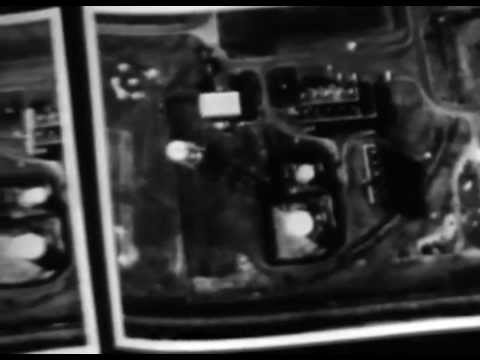more at
NEW VERSION with improved video & sound:
Originally a public domain film from the National Archives, slightly cropped to remove uneven edges, with the aspect ratio corrected, and mild video noise reduction applied.
The soundtrack was also processed with volume normalization, noise reduction, clipping reduction, and equalization (the resulting sound, though not perfect, is far less noisy than the original).
Wikipedia license:
…In cartography, technology has continually changed in order to meet the demands of new generations of mapmakers and map users. The first maps were manually constructed with brushes and parchment…
Advances in mechanical devices such as the printing press, quadrant and vernier, allowed for the mass production of maps and the ability to make accurate reproductions from more accurate data. Optical technology, such as the telescope, sextant and other devices that use telescopes, allowed for accurate surveying of land and the ability of mapmakers and navigators to find their latitude by measuring angles to the North Star at night or the sun at noon…
Advances in electronic technology in the 20th century ushered in another revolution in cartography. Ready availability of computers and peripherals such as monitors, plotters, printers, scanners (remote and document) and analytic stereo plotters, along with computer programs for visualization, image processing, spatial analysis, and database management, have democratized and greatly expanded the making of maps. The ability to superimpose spatially located variables onto existing maps created new uses for maps…
These days most commercial-quality maps are made using software that falls into one of three main types: CAD, GIS and specialized illustration software. Spatial information can be stored in a database, from which it can be extracted on demand. These tools lead to increasingly dynamic, interactive maps that can be manipulated digitally.
With the field rugged computers, GPS and laser rangefinders, it is possible to perform mapping directly in the terrain. Construction of a map in real time, for example by using Field-Map technology, improves productivity and quality of the result…
A topographic map is a type of map characterized by large-scale detail and quantitative representation of relief, usually using contour lines in modern mapping, but historically using a variety of methods. Traditional definitions require a topographic map to show both natural and man-made features… A contour line is a combination of two line segments that connect but do not intersect; these represent elevation on a topographic map.
The Canadian Centre for Topographic Information provides this definition:
A topographic map is a detailed and accurate graphic representation of cultural and natural features on the ground.
Other authors define topographic maps by contrasting them with another type of map; they are distinguished from smaller-scale “chorographic maps” that cover large regions, “planimetric maps” that do not show elevations, and “thematic maps” that focus on specific topics.
However, in the vernacular and day to day world, the representation of relief (contours) is popularly held to define the genre…
The study or discipline of topography, while interested in relief, is actually a much broader field of study which takes into account all natural and man made features of terrain…
By the 1980s, centralized printing of standardized topographic maps began to be eroded by databases of coordinates that could be used on computers by moderately skilled end users to view or print maps with arbitrary contents, coverage and scale. For example the Federal government of the United States’ TIGER initiative compiled interlinked databases of federal, state and local political borders and census enumeration areas, and of roadways, railroads, and water features with support for locating street addresses within street segments. TIGER was developed in the 1980s and used in the 1990 and subsequent decennial censuses. Digital elevation models (DEM) were also compiled, initially from topographic maps and stereographic interpretation of aerial photographs and then from satellite photography and radar data…
TIGER and DEM datasets greatly facilitated Geographic information systems and made the Global Positioning System much useful… Initial applications were mostly professionalized forms such as innovative surveying instruments and agency-level GIS systems tended by experts. By the mid-1990s, increasingly user-friendly resources such as online mapping in two and three dimensions, integration of GPS with mobile phones and automotive navigation systems appeared…

